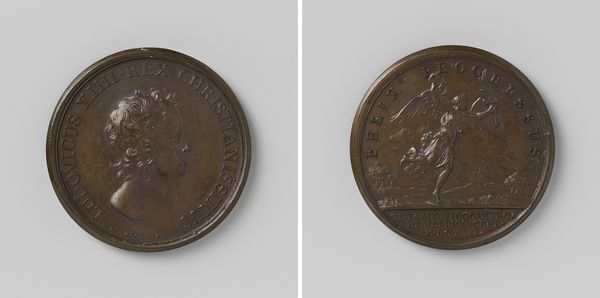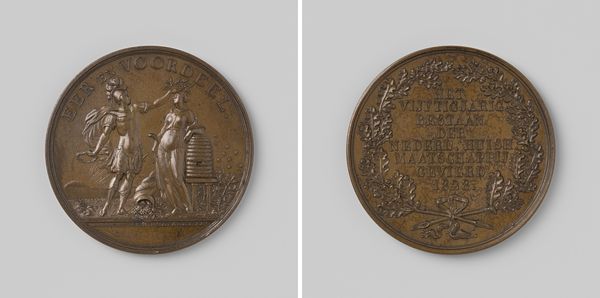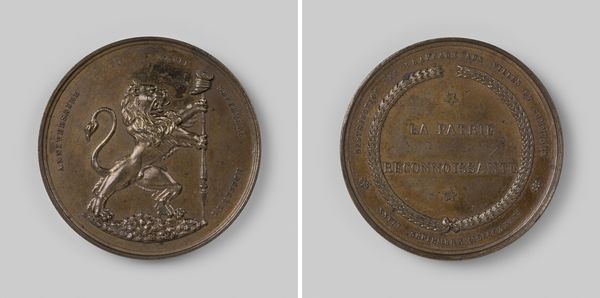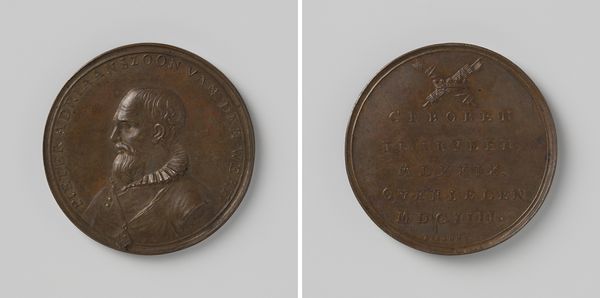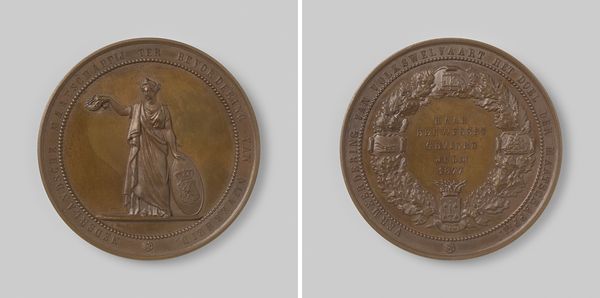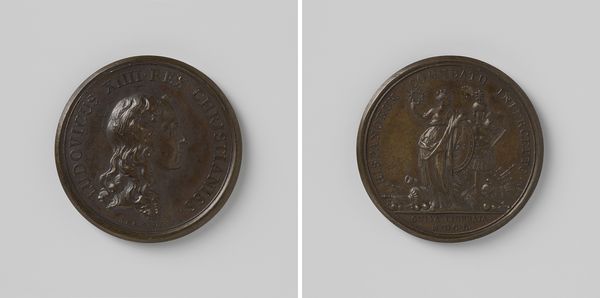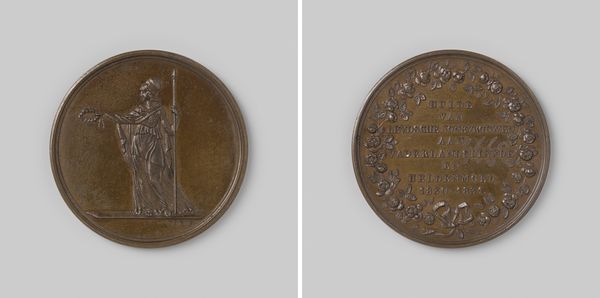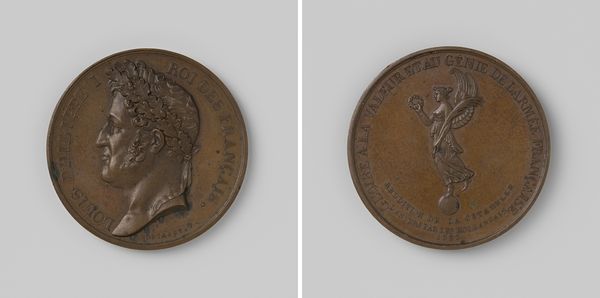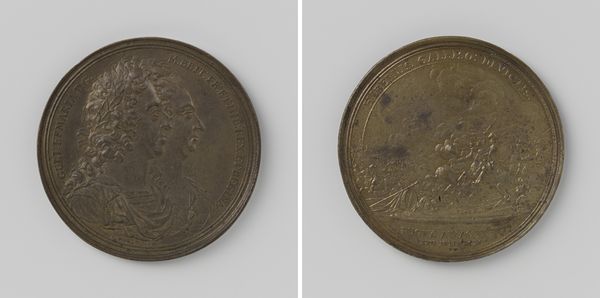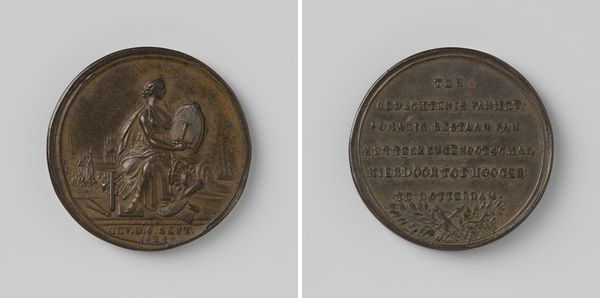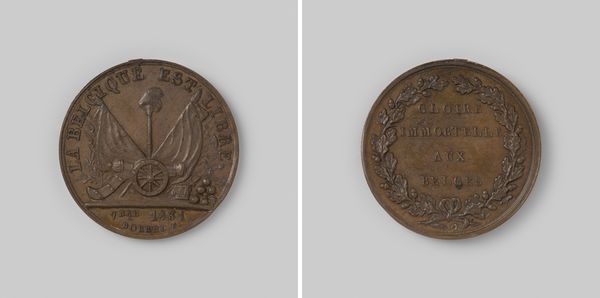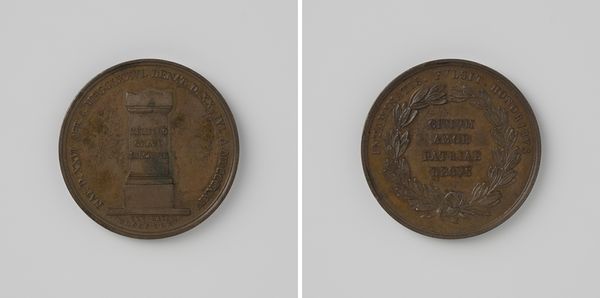
metal, relief, sculpture
#
portrait
#
medal
#
neoclacissism
#
metal
#
sculpture
#
relief
#
sculpture
#
ceramic
#
history-painting
Dimensions: diameter 3.7 cm, weight 26.63 gr
Copyright: Rijks Museum: Open Domain
Editor: Here we have "Senatus Veteranorum te Utrecht 1814" crafted in 1814, it’s attributed to Johannes Petrus Schouberg and looks like it's made of metal. Seeing both sides like this gives it the air of officialdom or commemoration – perhaps a medal? What stands out to you in this piece? Curator: Indeed, it speaks volumes, doesn't it? It's a medal, alright, shimmering with echoes of a bygone era. Look closely at the figure of Minerva on one side – isn’t she fabulous? She's Rome's goddess of wisdom, strategic warfare, and the arts, essentially a symbol of civilized society and, importantly here, protector of the State. And, who's that with her? A tiny tot offering what appears to be the eternal flame? Tell me what story that paints for you. Editor: Hmmm, protection...the state...maybe renewal after a period of conflict or upheaval? Is that historical context informing the piece? Curator: Spot on. Think about 1814 - just after the Napoleonic era and Utrecht's place in the Netherlands. This wasn't just a design; it's practically propaganda molded into metal. Look at the back of the medal. There's a date surrounded by a wreath and that date could be tied to Utrecht's historical experience. Editor: I didn’t realize there was so much embedded narrative just in one object! I tend to see the style, materials and the immediate impressions; now, seeing how intertwined art and historical narratives really can be, I realize what a huge impact history has. Curator: Exactly. I now encourage everyone, when face to face with art, consider what dialogues might resonate within it! What silent stories it wishes to tell. What stories may it hide?
Comments
No comments
Be the first to comment and join the conversation on the ultimate creative platform.
